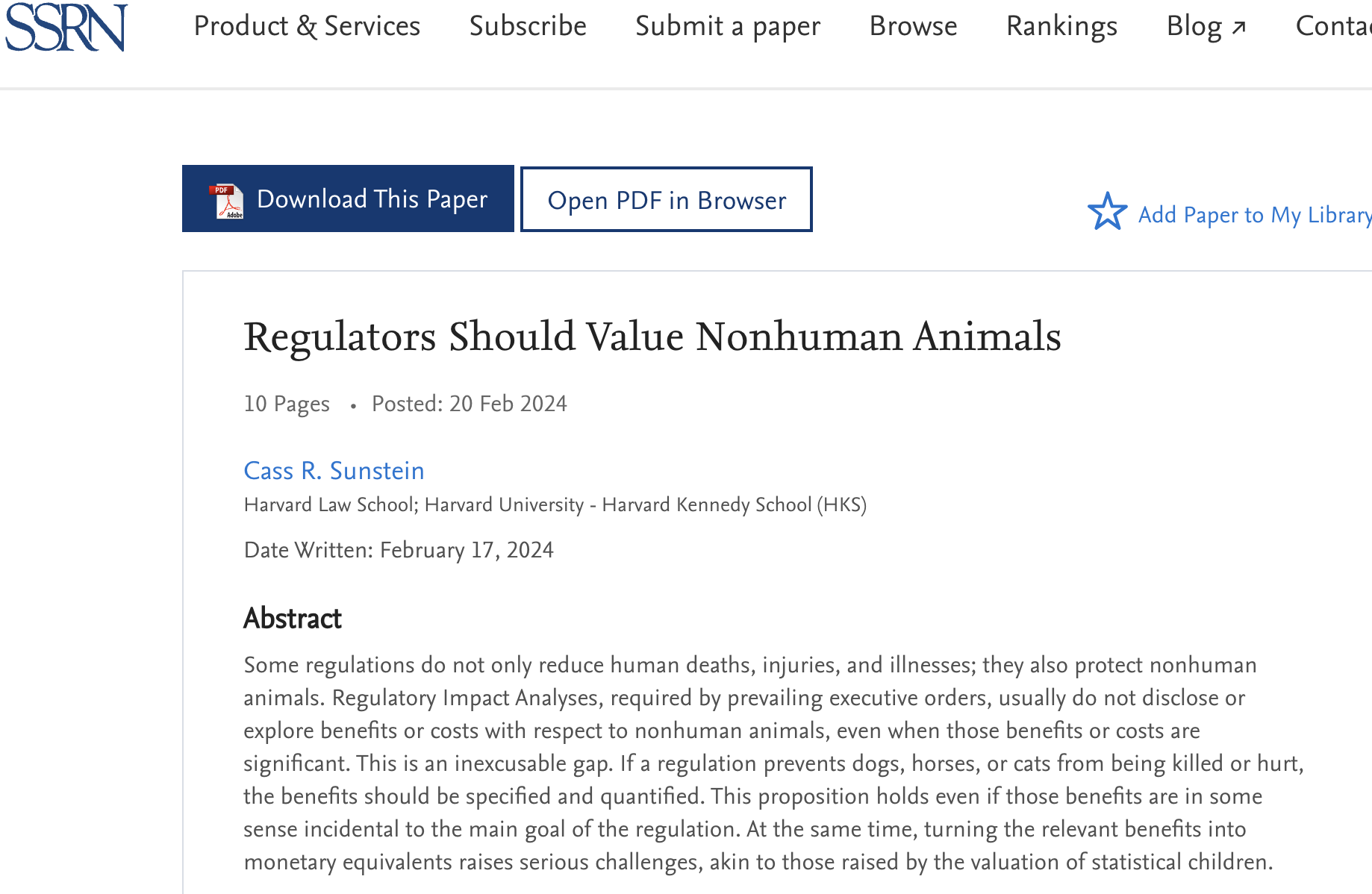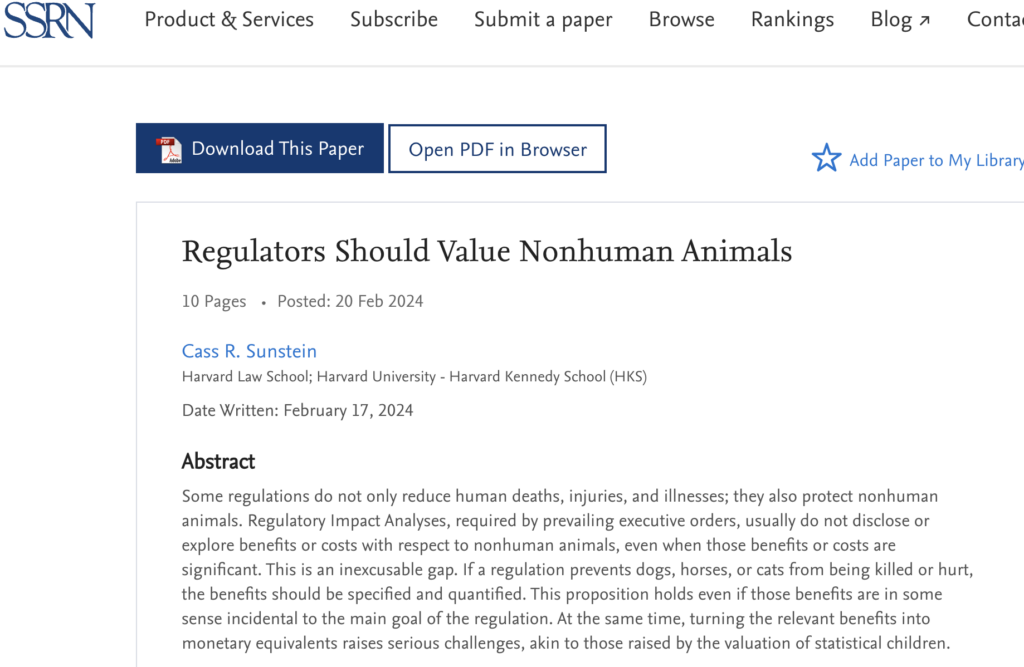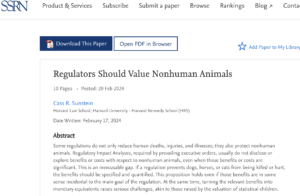New paper: Regulators Should Value Nonhuman Animals. @lsolum https://t.co/kNDp8K2XfS
— Cass Sunstein (@CassSunstein) February 20, 2024
https://papers.ssrn.com/sol3/papers.cfm?abstract_id=4729529
Harvard Law School; Harvard University – Harvard Kennedy School (HKS)
Date Written: February 17, 2024
Abstract
Some regulations do not only reduce human deaths, injuries, and illnesses; they also protect nonhuman animals. Regulatory Impact Analyses, required by prevailing executive orders, usually do not disclose or explore benefits or costs with respect to nonhuman animals, even when those benefits or costs are significant. This is an inexcusable gap. If a regulation prevents dogs, horses, or cats from being killed or hurt, the benefits should be specified and quantified. This proposition holds even if those benefits are in some sense incidental to the main goal of the regulation. At the same time, turning the relevant benefits into monetary equivalents raises serious challenges, akin to those raised by the valuation of statistical children.
…
Outside of federal rulemaking, an academic study finds that a Value of a Statistical Dog Life is $10,000. If the goal is to come up with some number, it would be an advance to use that one, perhaps as a plausible lower bound. But there is a natural objection. Is the life of a dog plausibly 1/1,000 that of the life of a person? …
Dogs live less long than human beings, which means that fewer life-years are at stake. We might be able to estimate the number of dog-years saved by a regulation. But what is the welfare loss for a dog who dies prematurely, or who lives with some illness or injury? That is a very difficult question to answer.
…
V. Paths Forward
Many rules produce health or safety benefits to animals; sometimes agencies identify and consider such benefits, and sometimes they do not.56 A central dividing line appears to be the law: If the law requires agencies to focus on harms to animals, they are likely to do exactly that;57 if the law does not require agencies to focus on harms to animals, agencies tend not to focus on those harms, even if the action that they are taking would reduce them.58 And when agencies do identify and consider the relevant harms, their treatment tends to be brief and qualitative.59
My main claim has been that agencies should identify and catalogue the benefits of reducing harms to nonhuman animals, even if the law does not require agencies to focus on them. At a minimum, agencies should attempt to quantify benefits and costs to nonhuman animals even if they cannot monetize them. With the help of contingent valuation studies, they should also attempt to monetize those harms. Unless the governing law forbids them to catalogue, quantify, and monetize benefits and costs to nonhuman animals, there may well be an argument that agency silence, on those benefits and costs, is legally arbitrary,60 at least if cataloguing, quantifying, and monetizing those benefits and costs is feasible. And if benefits or costs to nonhuman animals are significant, and if agencies are permitted by law to consider them, their failure to do so should be counted as arbitrary as well.61
#
Excerpt: “If a regulation prevents dogs, horses, or cats from being killed or hurt, the benefits should be specified and quantified. .. .Outside of federal rulemaking, an academic study finds that a Value of a Statistical Dog Life is $10,000. If the goal is to come up with some number, it would be an advance to use that one, perhaps as a plausible lower bound. But there is a natural objection. Is the life of a dog plausibly 1/1,000 that of the life of a person? … At a minimum, agencies should attempt to quantify benefits and costs to nonhuman animals even if they cannot monetize them. With the help of contingent valuation studies, they should also attempt to monetize those harms.”






